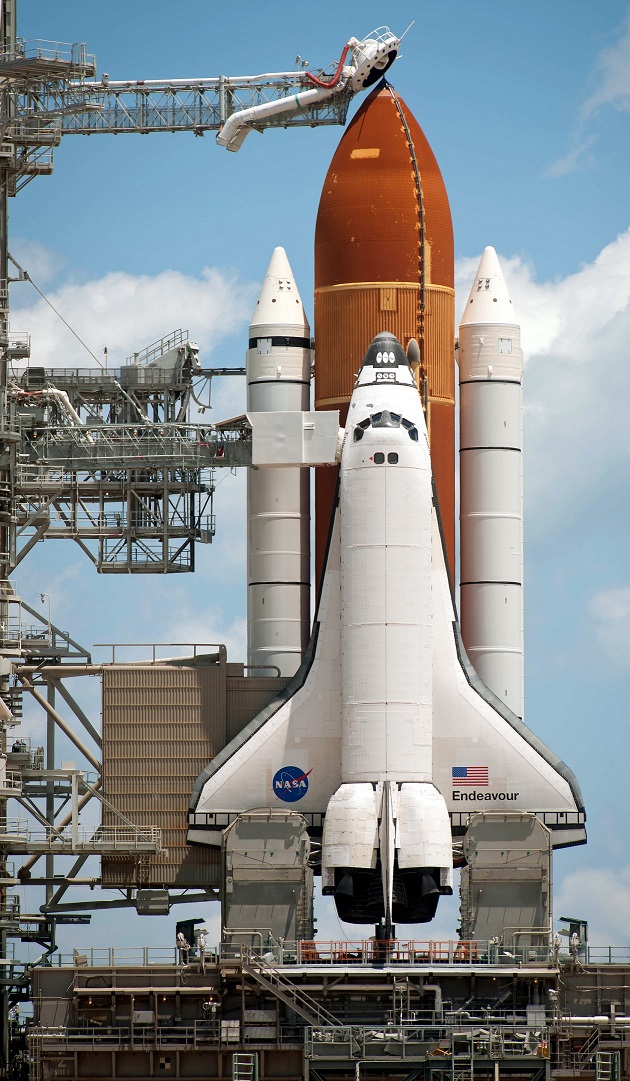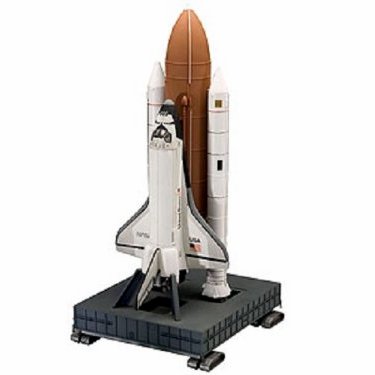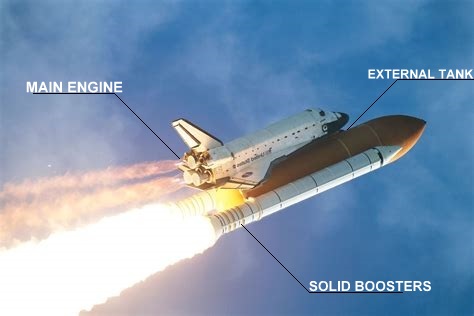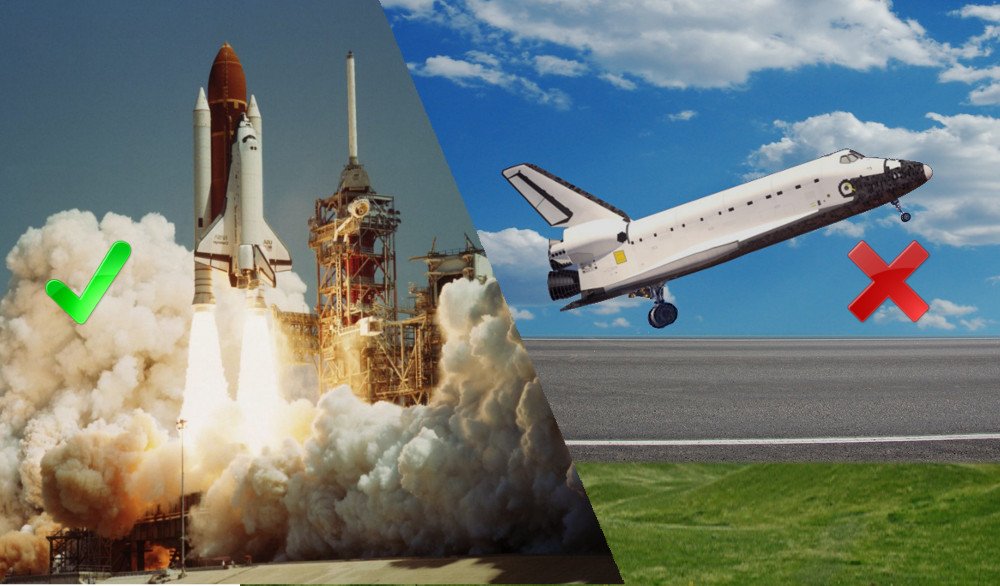Why Don’t Space Shuttles Take Off Like Airplanes?
Ever wondered if a space shuttle can land like an airplane, why can’t it take off like one, rather than launching straight up? Let’s find out!
Launching the Space Shuttle
To lift the 4.5 million pound (2.05 million kg) shuttle from the pad to orbit above the Earth, the shuttle uses the following components:
- Two solid rocket boosters (SRB)
- Three main engines of the orbiter
- The external fuel tank (ET)
- Orbital maneuvering system (OMS) on the orbiter
But the question is why can’t they be made to accelerate on a runway and then take off, just like an airplane does? Wouldn’t it be a more viable option to get rid of that huge launch pad and use a runway instead?
Let's look at this closely.
The space shuttle weights an astonishing 2.05 million kg which needs to be lifted to the space !
Making it to Orbit
Engineers calculate how much time they have to launch and reach a target for which they need to meet. This determination is called the launch window, and it has become such a critical part of spaceflight operations that NASA now devotes teams of engineers to the task of getting it just right. The main objective of a space shuttle after its launch is to ‘make it into orbit’. This means that the rocket has to achieve a specific path, which in this case is an orbit around Earth.
So how does it all happen?
We need to understand that the orbit is a path around Earth where the rocket achieves a balance between its own velocity (with which it revolves around Earth) and Earth’s gravitational pull. In a orbit the gravitational pull is just high enough to keep it locked in a circular path around Earth, but low enough so that the rocket doesn’t have to spend lots of fuel to keep from falling back to Earth.
How do we reach this orbit?
A rocket needs to attain a velocity so large that it gets travellers high enough to break free from Earth’s strong gravitational pull. This velocity is known as the ‘escape velocity’. For Earth, the escape velocity value is 11.2 kilometers per second (25,020 mph); this means that you have to accelerate a rocket at 11.2 kilometers per second in order to make the orbit.
Solid Rocket Boosters
The SRBs are solid rockets that provide most of the main force or thrust (71 percent) needed to lift the space shuttle off the launch pad. In addition, the SRBs support the entire weight of the space shuttle orbiter and fuel tank on the launch pad. Because the SRBs are solid rocket engines, once they are ignited, they cannot be shut down. Therefore, they are the last component to light at launch.
Main Engines
The orbiter has three main engines located in the aft (back) fuselage (body of the spacecraft). Each engine is 14 feet (4.3 m) long, 7.5 feet (2. 3 m) in diameter at its widest point (the nozzle) and weighs about 6,700 lb (3039 kg). The main engines provide the remainder of the thrust (29 percent) to lift the shuttle off the pad and into orbit.
External Fuel Tank
The engines burn liquid hydrogen and liquid oxygen, which are stored in the external fuel tank (ET), at a ratio of 6:1. They draw liquid hydrogen and oxygen from the ET at an amazing rate, equivalent to emptying a family swimming pool every 10 seconds! The ET is 158 ft (48 m) long and has a diameter of 27.6 ft (8.4 m). When empty, the ET weighs 78,000 lb (35,455 kg). It holds about 1.6 million lb (719,000 kg) of propellant with a total volume of about 526,000 gallons (2 million liters).
So Why Don’t Rockets Take Off Like Airplanes?
The simple answer is an airplane does not go any faster than 500-600 mph. As a pilot of a space shuttle though, you want to get out of the atmosphere as soon as practically possible, and for that, you need a very high velocity so as to escape the Earth’s gravitational pull.
The simple answer is an airplane does not go any faster than 500-600 mph. As a pilot of a space shuttle though, you want to get out of the atmosphere as soon as practically possible, and for that, you need a very high velocity so as to escape the Earth’s gravitational pull.
Thus the idea of launching the shuttle like an aeroplane is far too complex, and the costs associated are much, much higher than the conventional vertical launch.





